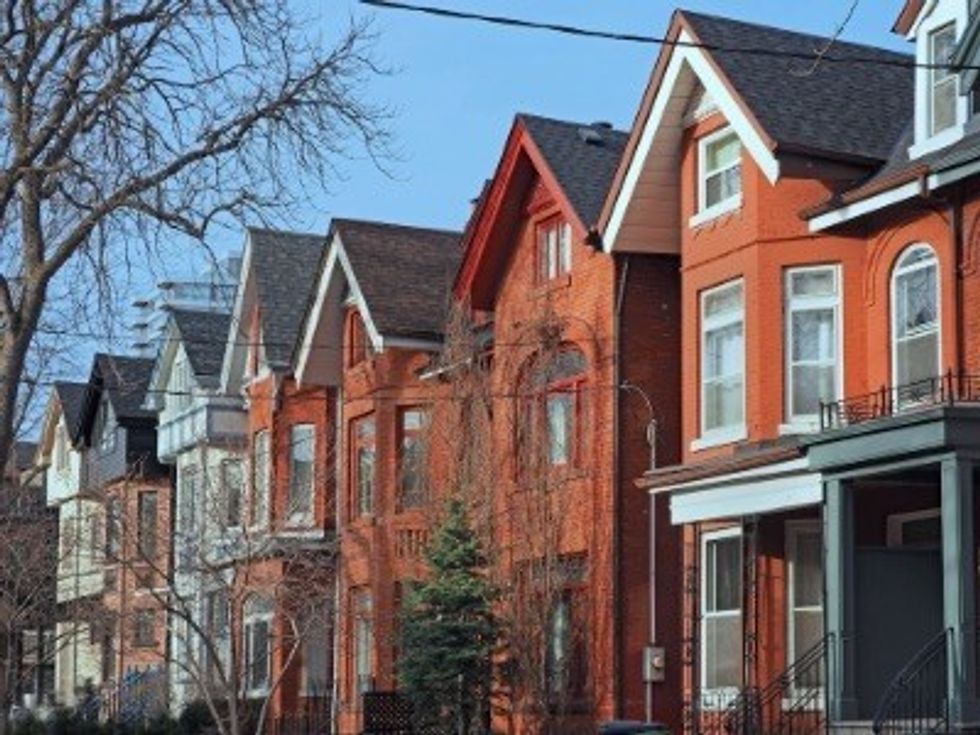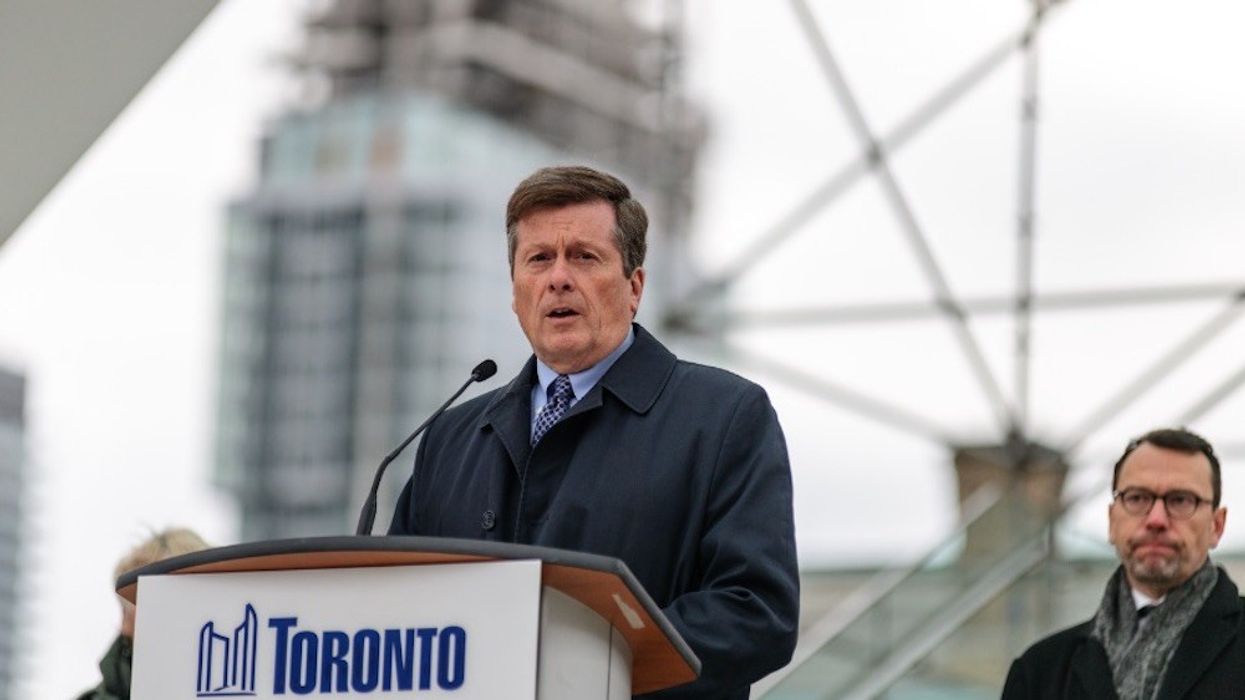“I accept the fact that people don’t like change,” Mayor John Tory tells STOREYS, in a discussion about Toronto's housing market and his new -- and somewhat controversial -- housing plan.
“People don’t like change of any kind, fundamentally. They find it jarring to their own existence; they worry about its potential impacts. But I’m also very logical in concluding that the status quo just can’t work for us,” he continues.
Mayor Tory is quick to highlight that the Greater Toronto Area (GTA) welcomes 150K new residents each year. Toronto therefore needs to meet or exceed the provincial target of building 285K new homes over the next 10 years, he says. So, Mayor Tory and the City’s Housing and Planning Committee chair, Councillor Brad Bradford (Beaches—East York), have directed the City Manager to develop the game-changing and self-proclaimed “ambitious” 2023 Housing Action Plan. At front and centre are zoning changes and incentives to increase density in neighbourhoods.
Tory calls for revisiting plans in Toronto’s Port Lands, waterfront, and other major projects to reassess whether potential for housing density is optimized. He also calls for the creation of a post-secondary strategy to increase student housing and -- perhaps most controversially -- outlines plans for the legalization and regulation of multi-tenant houses throughout the city, in neighbourhoods zoned for single-family homes. Tory stresses that he plans to bring these changes into reality “sensitively and sensibly.”
While the plan has the support of everyone from the Residential Construction Council of Ontario (no surprise there) to housing advocacy group More Neighbours Toronto, it’s not without its critics -- especially when it comes to changes to multi-tenant housing laws.
On a call with STOREYS last week, Councillor Stephen Holyday (Etobicoke Centre) called the City of Toronto’s housing plan a “radical” one. Holyday didn’t mince his words while slamming the legalization of more multi-tenant properties for everything from a resulting shift in a neighbourhood’s long-established character, to pressure on local infrastructure. It didn’t take long after our article was published for passionate Twitter users to call Holyday out for what they saw as blatant NIMBYism.
But let’s be honest, is Holyday merely vocalizing what other proud homeowners won’t? Do we really think the idea of multiplex buildings in leafy neighbourhoods like Rosedale or Lawrence Park will be widely and readily embraced by local residents? Tory seems to think so. He highlights how he and his wife lived in a fourplex in North Toronto -- where he says there are concerns over multiplexes -- back when they were first married.
“It was right in the middle of a neighbourhood with mostly single-family homes,” says Tory. “And, you know what? There were several fourplexes and they fit right in. Nobody took any notice of them. They’ve been there for 50 or 60 years. In that same North Toronto neighbourhood, there are small apartment buildings and duplexes. When I was out canvassing during the election, unless you stood and carefully studied the front of the house and saw that there were two or three doorbells or mailboxes, you wouldn’t know that a given place was a duplex or a triplex.”
The reality also remains that multi-tenant units aren’t a new idea in the city, even in its most exclusive neighbourhoods. As Tory highlights, in neighbourhoods like The Beaches, Forest Hill, and North Toronto, regulations were adjusted decades ago to allow for multiplex units.
“It’s not that the idea of duplexes and triplexes is new; it’s rather that houses that were originally built as duplexes and triplexes were bought up by people -- and I’m not being critical of this -- and turned into very large single-family homes,” says Tory. “All we’re saying is that the very duplexes, triplexes, and fourplexes that have existed in the city for decades and decades across a lot of these neighbourhoods are now going to be something that is encouraged -- or at least, permitted -- once again. We’re also going to allow other forms of affordable housing in the form of laneway and garden suite housing.”
Councillor Holyday says changes to multiplex rules could be dramatic and effect a neighbourhood’s residential fabric and the way it functions. “I would look at those councillors who have problems with that -- and they’re reflecting to some extent the anxieties of their constituents, which is their job to do in a certain way -- and just say, ‘Have faith we can do this sensitively,’” says Tory.
Still, change is a tough pill to swallow for many; Tory said so himself, after all. The mayor admits that there were concerns from homeowners when he was at their doors during election time. “But we talked it through with them and didn’t do it in a scary way, but a way that said, ‘Look, the realities are as follows, and the growth of the city is as follows, and people like your children and grandchildren need to have a place to live that is affordable in the city,’” says Tory. “When you sort of had those kinds of conversations, there were a lot more people understood that, if you do it responsibly, these changes were not only understood, but acceptable to them.”
But Councillor Holyday thinks this plan poises problems for suburbia. Holyday was particularly vocal about the impact of changing multi-tenant rules on street parking. His concern is that density will result in more cars on suburban streets, some of which currently lack sidewalks.
“We have rules in place that put limits on parking,” says Tory. “In the more suburban areas, the fact is that there are bigger parking spaces. The prevalence of street parking in Toronto is more a reflection of the fact that there aren’t driveways or the same type of places to put cars that there are in the suburbs. I think this is going to be an evolutionary process that has to respect the character of those neighbourhoods and that’s why I say that anything we do has to be done sensitively and sensibly.”
But we have to find a way to do it, says Tory. “This is opposed to saying, ‘Well, that means we just can’t do any of it; we just can’t have any gentle density in large parts of the city,’” he says. “It’s just not a workable answer moving forward to say that everything is going to remain the same in 70% of the city when the city is growing by 150K a year.”

This change should be viewed as a good thing, as far as the mayor is concerned. Tory points to the prevalence of illegal, unregulated, and unsafe multi-tenant housing units in Toronto, something he says results in “thousands” of complaints each year. “Now, we’re going to make them safe and regulated so that we can have those increased options for housing,” says Tory. “This is going to be much more compatible with the neighbourhoods than those in which they are now illegally.”
While More Neighbours Toronto advocates are happy with the plan’s widespread legalization of rooming houses, they say that -- without addressing emergency or transition housing -- it still falls short of providing for the city’s most vulnerable residents.
“I can’t really accept that criticism,” says Tory of this sentiment. “Legalizing multi-tenant housing was not meant to be an answer to that. But the dramatic increase we brought about in the creation of new supportive housing is meant to address that. We have a very substantive record -- 3000 supportive housing units over the last two years and another 2000 pledged for next two years, with large help from other governments in terms of the Rapid Housing Program -- that is the housing that is for people facing dire circumstances in their lives. We’re doing a lot of that. Heck, I think that there will be far more units created through that series of programs on supportive housing than there will be by any change to multi-tenant rules.”
Mayor Tory says that a combination of the two initiatives -- the regulated and safe supply of multi-tenant housing, and the supportive housing efforts -- addresses the concern for the city’s most vulnerable. When it comes to housing affordability, Mayor Tory says that all of the options offered in his housing platform are there “so that people have options,” but says that the one that has the one that has the greatest potential to produce a larger number of units are mid-rises along transit corridors or other arterial roads.
“I think there’s such an opportunity there to build nine to 12-storey buildings that have affordable housing components and dynamic street activity,” says Tory. “We have a lot of arterial streets -- I could name 10 without even getting partway into the list -- that are dramatically under-developed at the moment. I’m not suggesting great big high-rise towers. But I am suggesting, especially in places where we have higher order transit, that the notion that we wouldn’t be engaged in some densification through midrise development is actually an advocation of responsibility. Those are places where, when you invest in transit, you put people to live as well. This isn’t just the one-storey walk-ups above stores.”
The bottom line is that housing affordability remains a hot topic as we reflect on the past year and look ahead to 2023. Everyone is feeling the pinch in our current market -- especially the would-be first-time homeowners. So, inevitable change is on the horizon. “Accepting the status quo is accepting the fact that it’s okay if the only choice is between living in a 50-storey tower or a two-storey home,” says Mayor Tory. ‘It’s accepting, seemingly, of the notion that, when 150K people are coming here every year, everything can stay the same. But that’s just not true.”





















